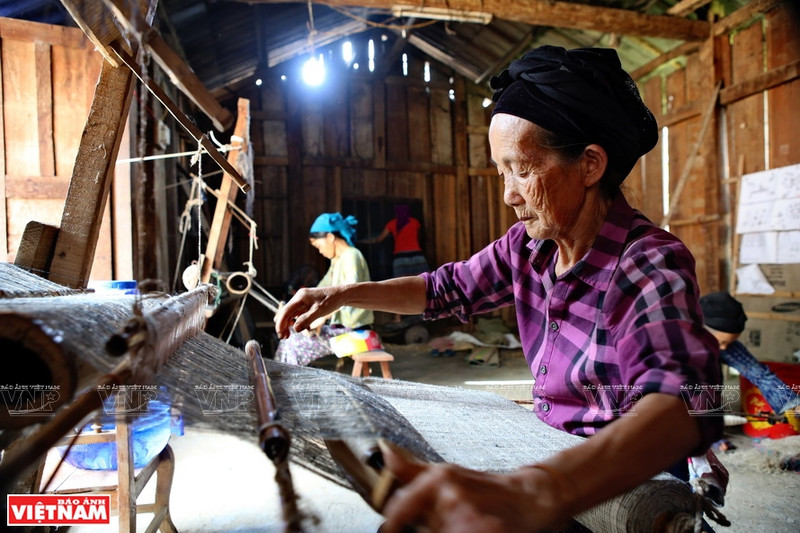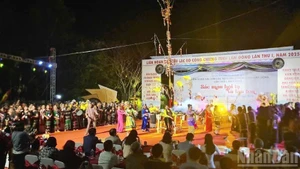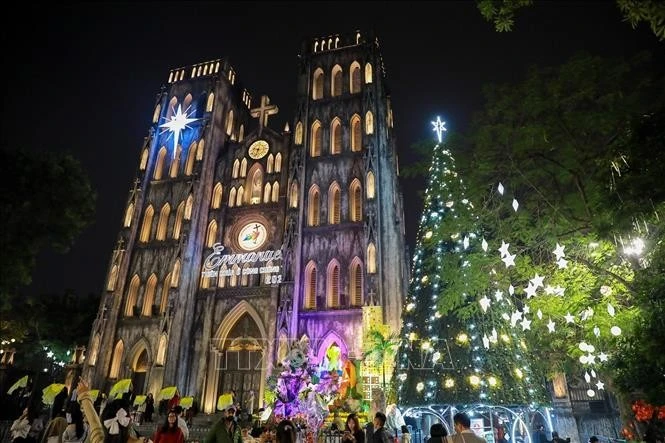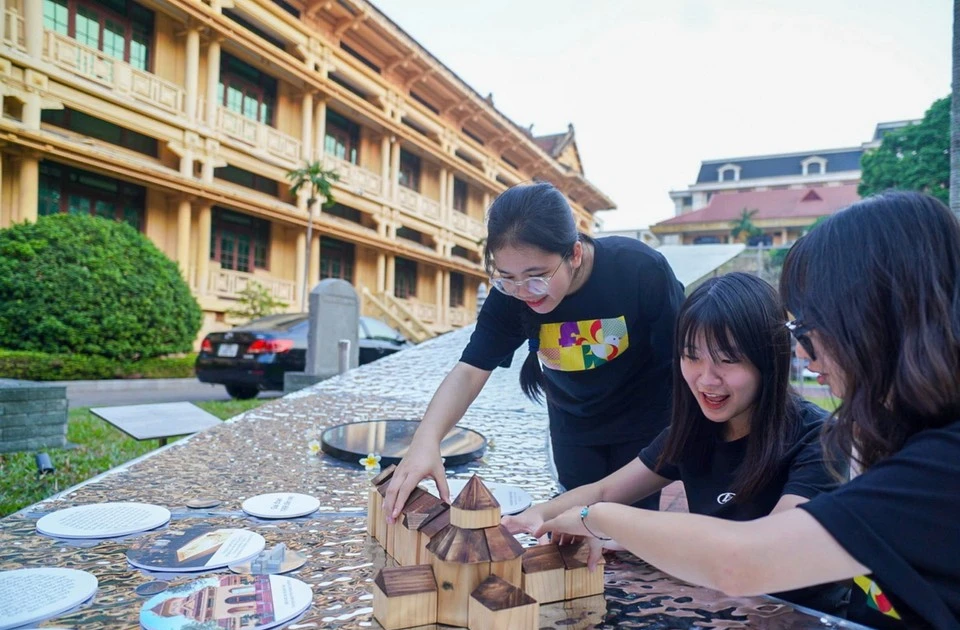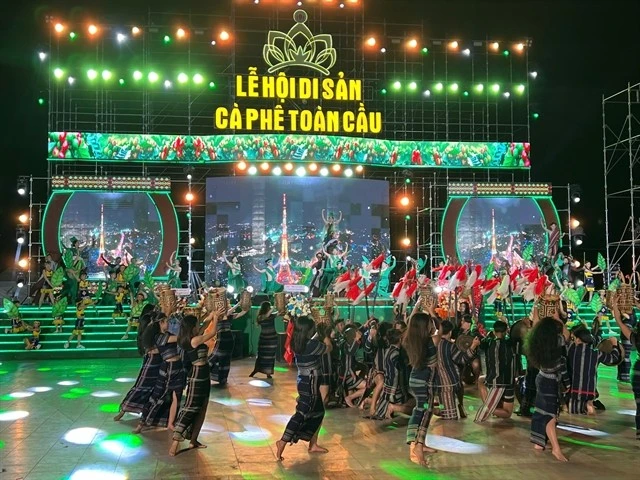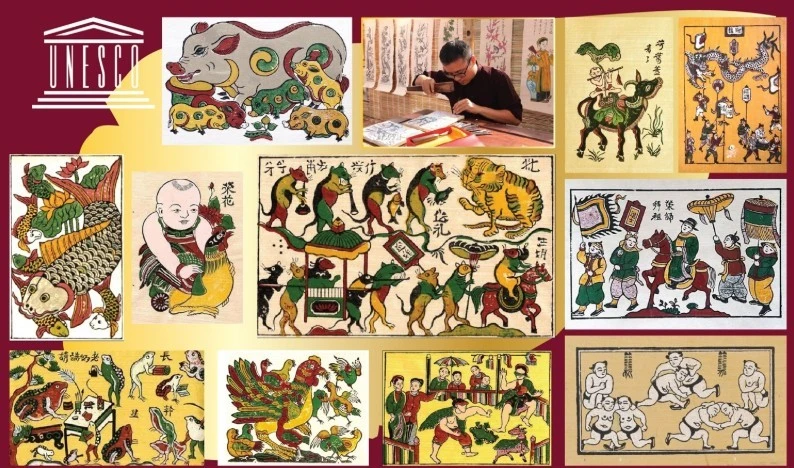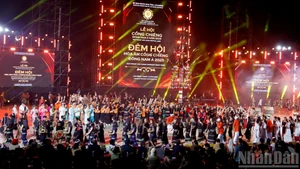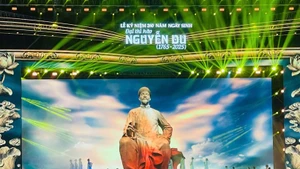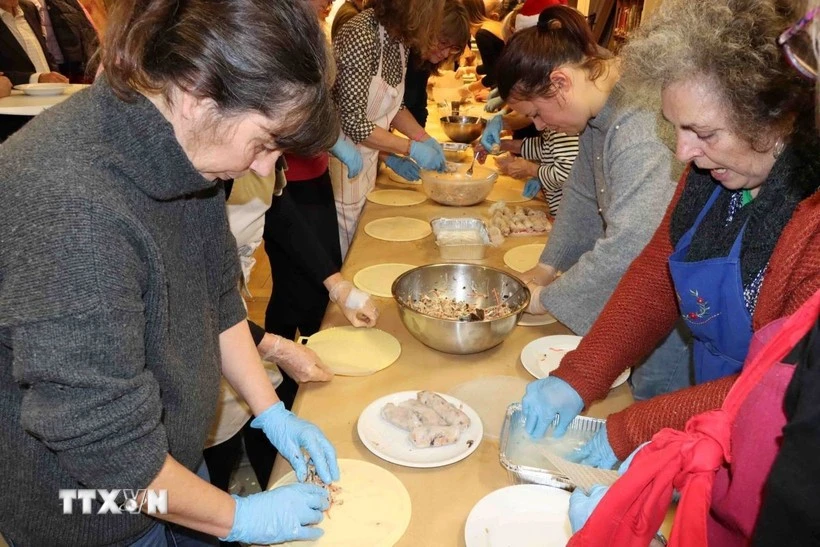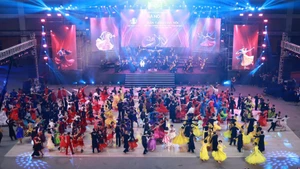Home to the Mong ethnic people, the village has been known for their craft of linen weaving and indigo dyeing for hundreds of years and has become an attractive destination for tourists to the northern mountainous province of Ha Giang.
Located in Quan Ba District, Lung Tam Commune is about 50 km from Ha Giang City and consists of seven villages.
With over a hundred rustic households, Hop Tien is a small village lying in a valley through which the Mien River flows, creating a picturesque landscape.
The villagers have preserved and promoted their ancestors’ craft of flax cultivation, fabric weaving, and indigo dyeing, which has not only generated income to improve the livelihoods of the locals but is also imbued with cultural values of the Mong community.
Established in 2001, Lung Tam Linen Cooperative in Hop Tien Village is a gathering place for Mong ethnic women to show off their weaving skills and display their products.
The cooperative’s products have travelled beyond Quan Ba District to reach out to customers across the country and 20 countries around the world, including France, Japan, Sweden, and the US. The cooperative’s operation has significantly improved the living standards of each member.
The cooperative also welcomes visitors for explore the craft of linen weaving.
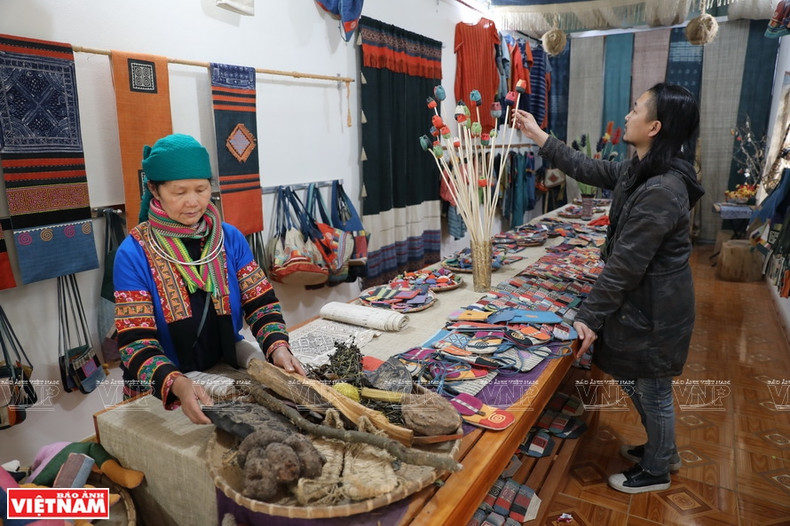 |
| Various products such as cloth, wallets, blankets, bags, and pillows on display at Lung Tam Linen Cooperative (Photo: Vietnam Pictorial) |
According to artisans from Lung Tam, flax is seen as a symbol of life and traditional culture of Mong ethnic community. Linen fabric has also strong attachment to the spiritual life of the Mong people as it connects people to their ancestors.
Accordingly, linen threads are believed to lead the way for the dead to be reincarnated. Dead H’mong people are buried with their linen costumes so that they will be recognised by their ancestors in the afterlife.
The linen weaving process involves approximately 40 intricate steps, from sowing seeds to harvesting, separating fibres, spinning flax, joining threads, weaving, washing, drying, and dyeing. Each step requires a lot of work, patience, passion, and skill from the Mong women.
The colours of the products are made naturally from plants and trees in the mountains, creating unique beauty.
To create their distinctive patterns, Mong people use handmade painting tools dipped in melted beeswax to draw on the fabric — starting with straight lines and then moving to triangles, spirals, coins, crosses, and bird feet — to narrate stories about nature, crops, and community beliefs.
In the Mong community, weaving is set as a criterion to measure a woman’s dexterity, industriousness, and dignity. Traditionally, every Mong woman must make at least one set of linen clothing for herself.
Young Mong women must be skilful in linen weaving before getting married. Upon leaving for the groom’s house, the bride is presented with a linen dress by her mother. She must also gift her mother-in-law a linen dress made by herself.
To catch up with the market’s demand, Mong women in Lung Tam diversify their products for tourists with items such as scarves, wallets, bags, dresses, pillow covers, and wall paintings. Thanks for their efforts, the linen weaving village of Lung Tam enrichs the vibrant colours of Mong culture in the rocky mountainous area.
